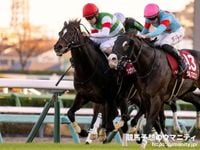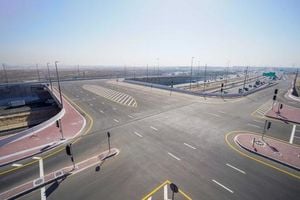As the spring season blossoms in Kyoto, anticipation is building for the 171st Emperor's Prize (Spring), set to take place on May 4, 2025, at the iconic Kyoto Racecourse. This prestigious event is not just a highlight of the racing calendar but also marks a significant milestone, celebrating the centenary of the racecourse's establishment at its current location. The excitement surrounding this year’s race is palpable, with fans eagerly awaiting the thrilling competition over the 3200-meter turf course.
Leading up to the event, renowned commentator Katsuta Taro has been busy preparing for his paddock analysis on Green Channel, where he will share insights and commentary on the day of the race. His preparations included a thorough review of all the chestnut east groups that participated in the lead-up races from April 22 to April 24, offering a glimpse into the form and fitness of the horses set to compete.
The Emperor's Prize (Spring) has a storied history, and this year, it promises to be no different. With a strong field of contenders, analysis of bloodlines and previous performances is crucial for fans and bettors alike. Notably, horses sired by Deep Impact lineage stallions have shown impressive results since 2019, boasting a record of [4-4-3-16], reflecting a 40.7% success rate in finishing within the top three. In contrast, horses whose sires do not belong to this lineage have struggled, with only a 10.1% success rate in the same period, as evidenced by their record of [2-2-3-62].
Among the horses to watch this year are Chevalier Rose and Shownan Lapuntas, both of whom fit the criteria for the successful Deep Impact lineage. On the other hand, contenders such as Sunrise Earth, Hyateo Fukunosuke, Brozza Horn, and Hedentoer do not meet these criteria and may face challenges as they vie for the prestigious title.
In addition to the primary event, the Japan Racing Association (JRA) has announced that four special races will take place on the same day, further enhancing the celebration of the racecourse's 100th anniversary. These races will feature names that reflect the historical significance of the Kyoto Racecourse's location changes over the years.
The first of these special races is the Shimagahara Special, a 2-win class race over 1800 meters, named in honor of the Shimagahara Racecourse established in 1907. This racecourse hosted its inaugural Kyoto Race in 1908, marking the beginning of a rich racing tradition in the area.
Following this, the Shuchi Special, also a 2-win class but conducted over dirt at 1900 meters, is named after the town of Shuchi in Funai District, where the Shimagahara Racecourse relocated after a devastating fire in 1912. The historical significance of these names adds a layer of nostalgia and pride for local fans.
Next up is the Yodo S, a 3-win class race over 1200 meters of turf, which is aptly named after the current location of the racecourse, known affectionately as "Yodo" after the nearest station. This race symbolizes the continuity and evolution of horse racing in Kyoto.
Finally, the Oguraike S, another 3-win class race but over dirt at 1200 meters, pays tribute to the Ogura Pond that once existed in the southern part of Kyoto Prefecture. The pond is believed to be a remnant of the natural landscape that shaped the region's history.
As the countdown to the Emperor's Prize (Spring) continues, fans and participants alike are gearing up for what promises to be an exhilarating day of racing. The stakes are high, and the atmosphere is charged with excitement as horses and jockeys prepare to make their mark in this storied event.
With the race just days away, the eyes of the racing world will be firmly fixed on Kyoto, where the rich history of the sport meets the thrill of competition. Will the favorites live up to their expectations, or will an underdog rise to claim glory? Only time will tell as the horses line up at the gates, ready to embark on a race that will be remembered for years to come.





